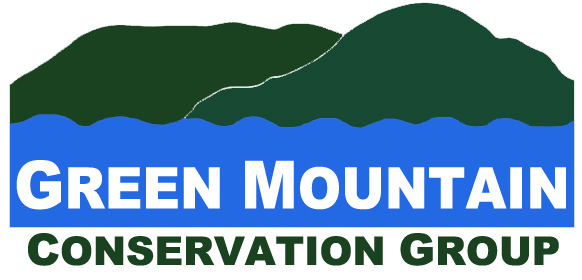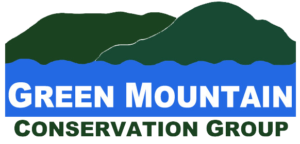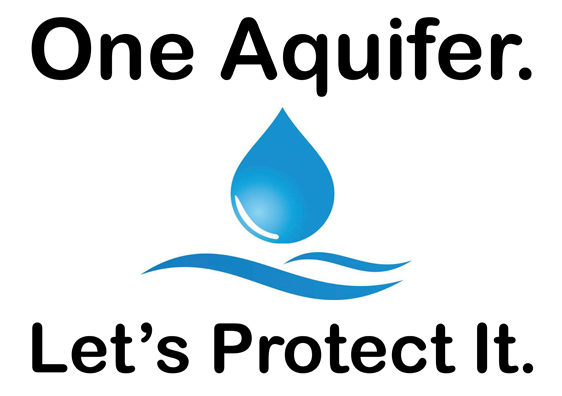
Welcome to GMCG’s “One Aquifer” initiative. The health of the Ossipee Aquifer is inseparable from the health of those who rely on it and the health of the region’s economy. Those of us who have built our homes, our businesses and our roads above it have a responsibility to protect it and to take notice when others are not. Below you will learn what an aquifer is and strategies to help protect it for future generations.
About the Ossipee Aquifer
If you live in the Ossipee Watershed region (a sub watershed of the Saco River Watershed), chances are your drinking water comes from the Ossipee River Basin Aquifer. The Ossipee Aquifer is the largest stratified drift aquifer in the State of New Hampshire. Stratified drift aquifers lie within sand and gravel deposits laid down by meltwater rivers that drained the continental glaciers while they were retreating from this area approximately 15,000 years ago. Because aquifers consist mainly of sand and gravel, aquifers are more vulnerable to contamination due to extremely permeable soils. The high transmissivity of water in aquifer recharge areas means that potential contamination sources in one town can impact groundwater quality in another town, as water knows no boundaries.
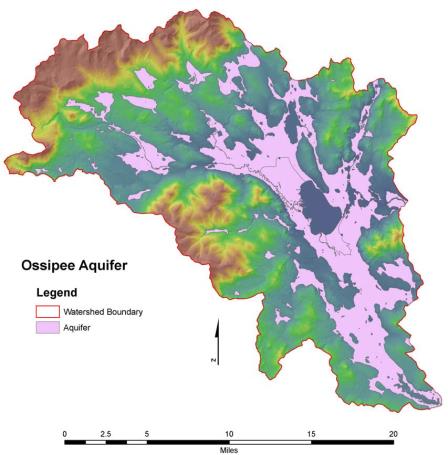
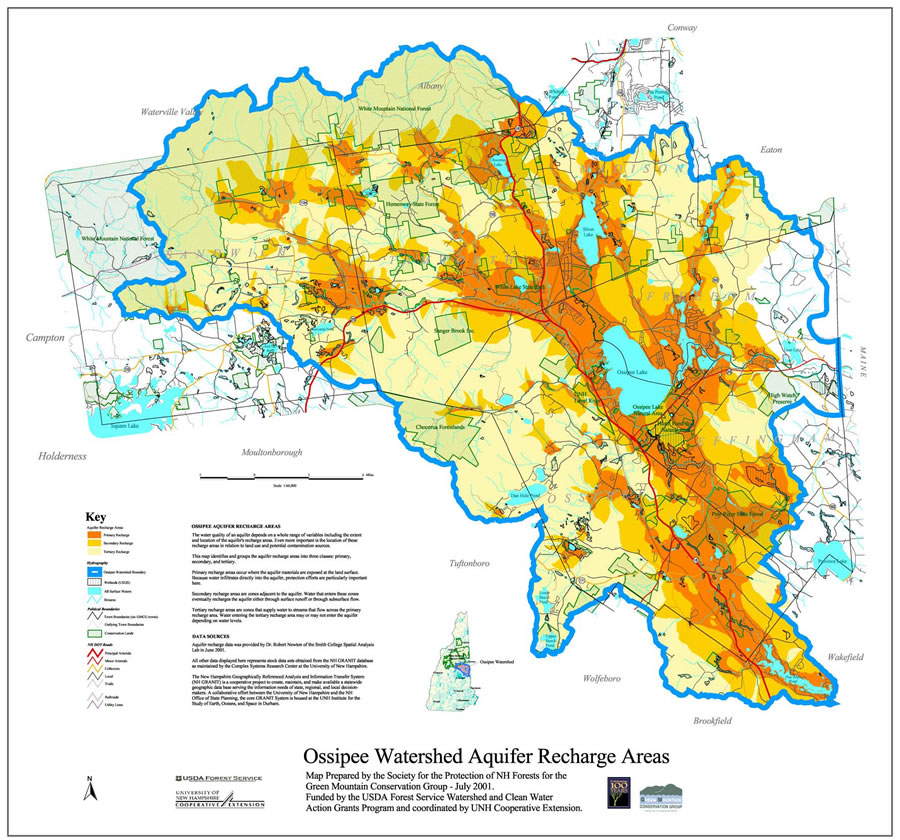
![Aquifer Diagram March 10 2023 [just aquifer]](https://gmcg.org/wp-content/uploads/2023/04/Aquifer-Diagram-for-website-1024x646.jpg)
How do we protect the aquifer?
Best Management Practices to protect water quality
GMCG continues to advocate for Best Management Practices (BMPs) to protect shared water resources through the reduction of pollutant loads and storm water run-off using structural designs such as rain gardens, vegetated buffers, drainage ditches, swales, retention walls, and basins. BMPs also include proper septic system maintenance. GMCG is now in Phase III of our Watershed Management Plan facilitating the implementation of BMPs on Ossipee Lake by working with private home owners, businesses, and lake associations.
BMPs protect:
Environment – By mitigating the amount of phosphorus and nitrogen loading into a lake you can help prevent bacteria and algae blooms.
Health – Keep drinking water clean from harmful bacteria, household chemicals, and winter salt.
Property – Maintain the integrity of your home’s foundation, driveway, and surrounding soils and plant life.
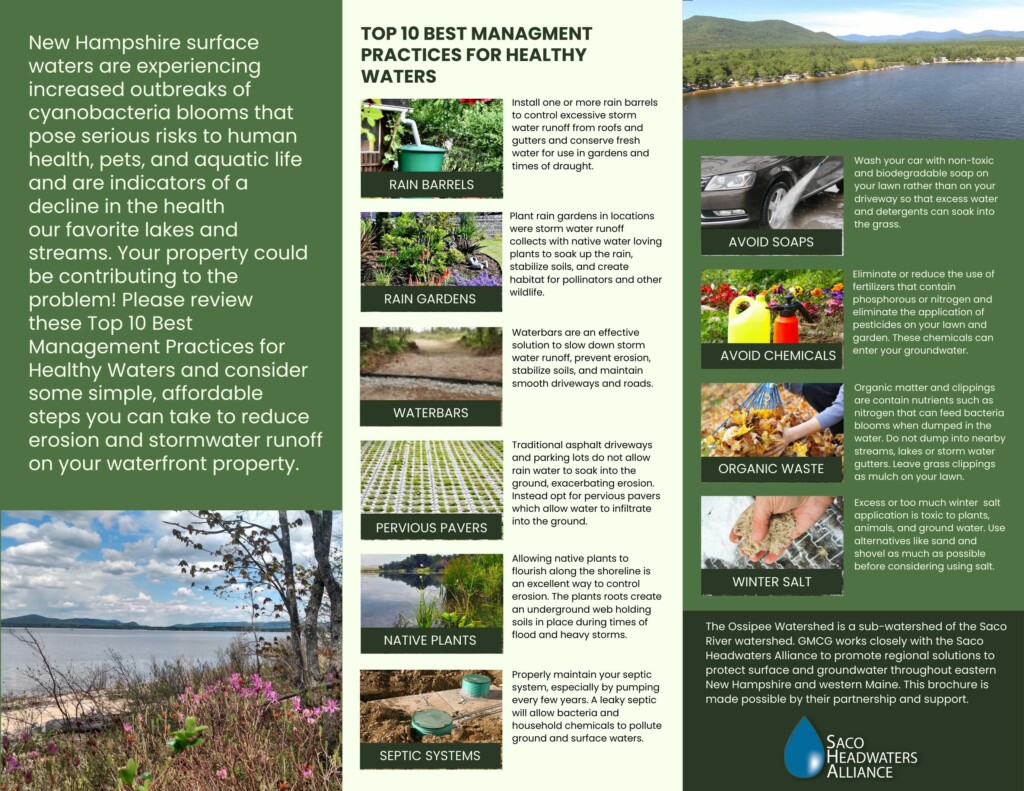
Salt Responsibly Campaign
New Hampshire’s freshwater lakes, streams and groundwater are becoming saltier each year. The leading cause is the 400,000 tons of road salt applied every winter to our Interstates, state highways, town roads and other surfaces. Salt is toxic to aquatic life and plants, it corrodes bridges and vehicles, and when it accumulates in drinking water it jeopardizes human health.
Green Mountain Conservation Group launched the Salt Responsibly campaign in January 2022 to inform New Hampshire residents about the harm caused by road salts and to provide guidance on ways to reduce the amount of salt that is contaminating New Hampshire’s waterways and water supply.
The Salt Responsibly campaign is not about casting blame. We recognize that safety is the first priority of those responsible for winter road maintenance, and until the day that practical alternatives are widely available, road salt use will continue. What we seek is a broader public understanding of the problem and to inspire everyone to make changes that will reduce the amount of salt that is damaging our environment, threatening our health, and hurting our economy.
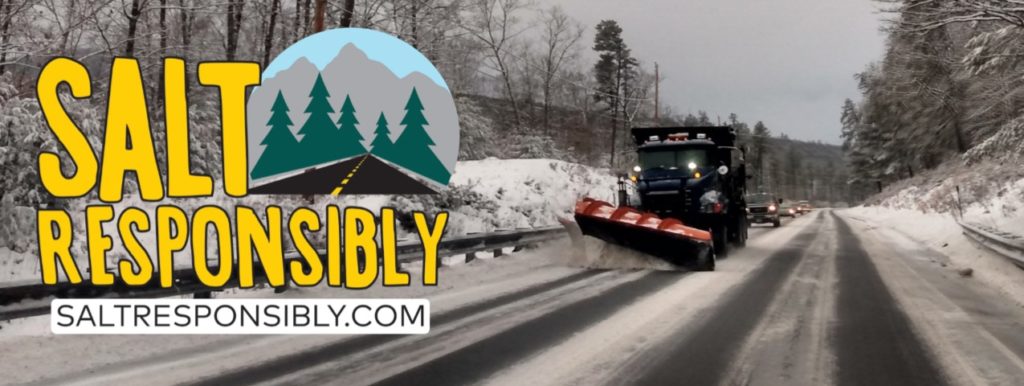
Aquifer Protection Committee
How do we work together to protect this essential resource into the future? The answer lies in education and cooperation. There must be cooperation between the state, multiple towns, local organizations and all people living in the area. GMCG has developed the Aquifer Protection Committee (APC) for the continued protection of the Ossipee aquifer. Since 2021 the OAPC has been working to uphold the town of Effingham’s Ground Water Protection Ordinance in relation to a proposed gas station over the aquifer.
GMCG has partnered with Dr. Robert Newton from Smith College to research groundwater within the Ossipee Aquifer. In his presentations, Dr. Newton introduces audiences to the Barnes Aquifer Protection Advisory Committee (BAPAC) that serves to protect the Barnes Aquifer, a large stratified drift aquifer located in the Connecticut River Valley in western Massachusetts. This demonstrates a real life example of how an advisory committee made up of representatives from multiple cities and towns that draw water from the aquifer can work together to effectively protect the quantity and quality of aquifer water for future generations. To learn more, view the slide presentations below.

Ground Water Protection Ordinances
Create strong protections on the municipal and town level is a critical layer of protection from new development that threats water quality.
GMCG is pleased to announce that on March 28th voters in Tamworth resoundingly approved a Groundwater Protection Ordinance, with 231 in favor and 43 against. Tamworth becomes the 111th New Hampshire town to pass such an ordinance to enhance protection of critical drinking water resources. Back in 2011 a similar measure did not pass, but efforts to educate the community about the importance of drinking water protection continued. In 2021, the Tamworth Planning Board, in collaboration with the Tamworth Conservation Commission, formed a Groundwater Protection Ordinance Committee that sought input from individuals and businesses, listened to their concerns, and made modifications to the draft ordinance based on input received at three public hearings held last fall. Thanks to the grassroots work of many Tamworth residents, there are now reasonable safeguards to ensure that Tamworth’s future citizens will have access to clean, safe drinking water. Congratulations, Tamworth!

Community Projects
The Ossipee Aquifer: A Story of Water is a project of Chocorua Lake Conservancy, Cook Memorial Library, Green Mountain Conservation Group, and Yeoman’s Fund for the Arts. The project brings awareness to the importance of protecting the aquifer for future generations.
How can you help?
- Participate in volunteer opportunities or join a committee with GMCG
- Attend one of our events to learn about the watershed and meet like minded people working to protect the aquifer
- Display a “One Aquifer” lawn sign. Write to info@gmcg to learn how.
- Download our Best Management Practices Brochure and share with neighbors.
- Read up on the many easy do-it-your-self solutions for homeowners on storm water management at Soak Up The Rain NH.
- Donate to help us continue our aquifer protection programs.
- Encourage your town officials to adopt salt reduction strategies.
